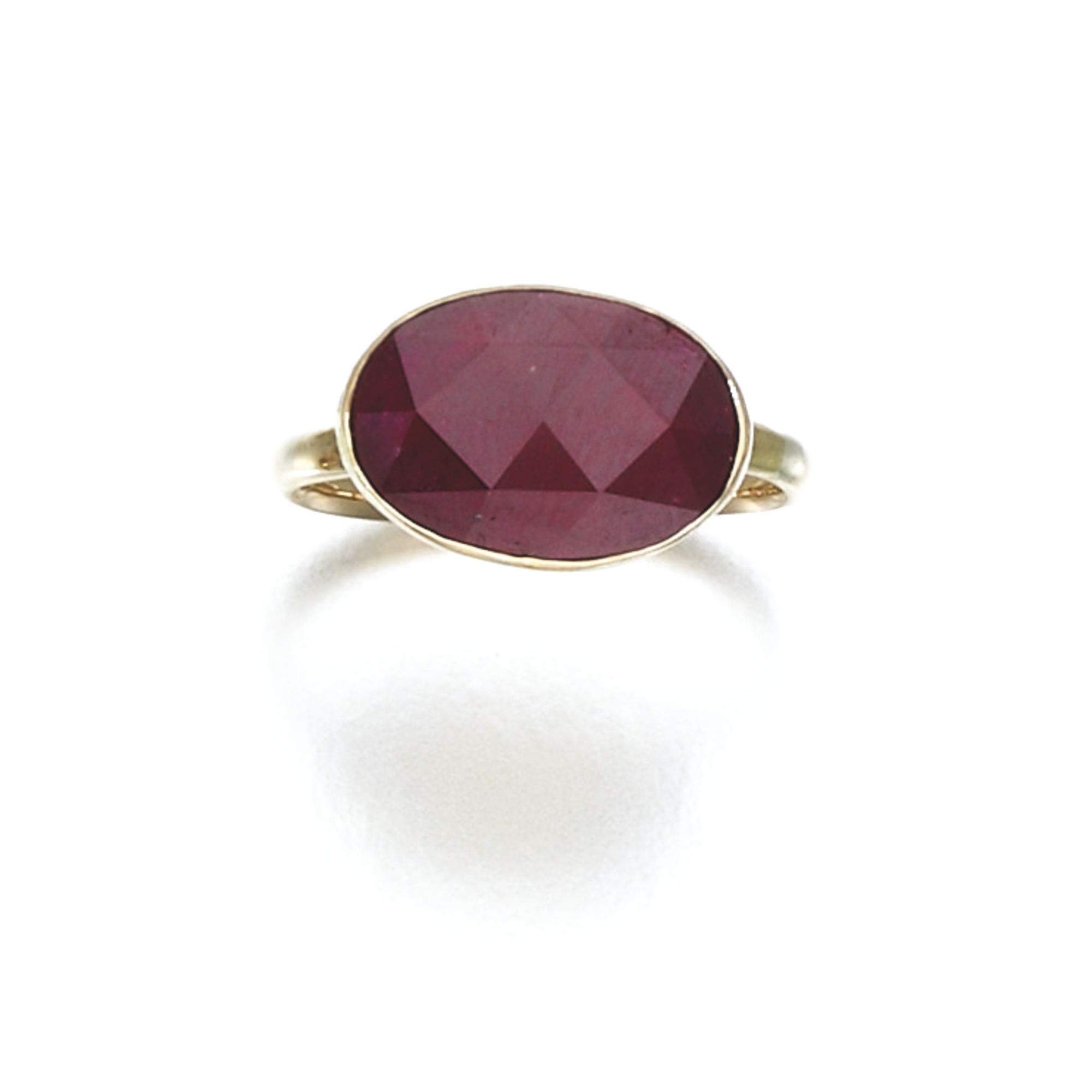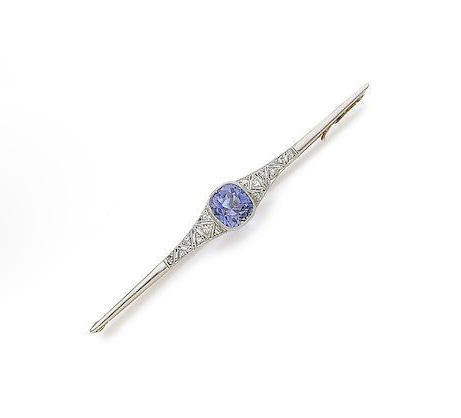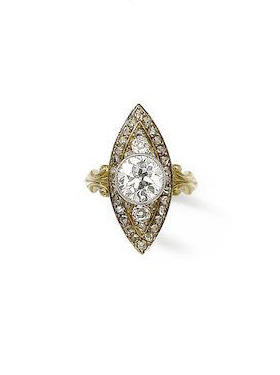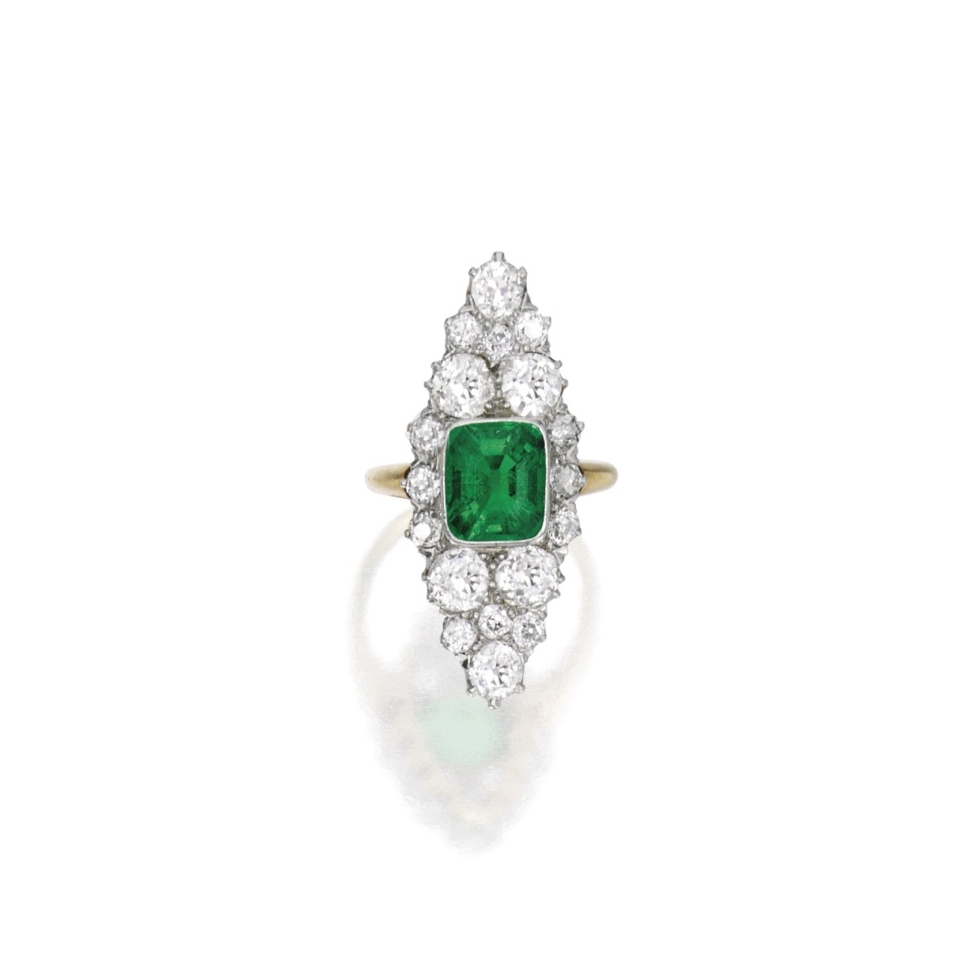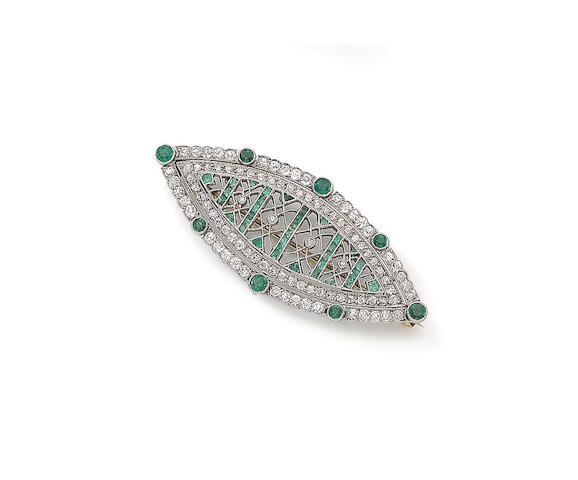September 2016
/Sapphires are a color variety of corundum, a crystalline form of aluminium oxide. Corundum is one of the hardest minerals, rating 9 on the Mohs scale. Corundum gems of most colors are called sapphires, except for red which is called Ruby. Multi-color sapphire earrings in 18kt yellow gold. Available from Valentin Magro
Montana Sapphire and Diamond brooch by JAR
Montana's Sapphires
The official nickname for Montana is "The Treasure State" because of its rich mineral reserves. The mountains of Montana have yielded gold and silver since the first substantial deposits were discovered in the mid 1800's. Montana is also home to one of the most valuable gemstones that can be found in the United States of America: sapphires.
Montana Sapphires. Photo courtesy of Georgetown Lake
Sapphires were first discovered in Montana in 1865, in alluvium (a deposit of clay, silt, sand, and gravel left by flowing streams in a river valley) along the Missouri River by Ed "Sapphire" Collins. Collins sent the sapphires to Tiffany's in New York City, and to Amsterdam for evaluation. These stones however, had poor color and of overall low quality and little notice to them beyond giving Montana sapphires a poor reputation.
Corundum was later found at Dry Cottonwood Creek near Butte in 1889, Rock Creek near Philipsburg in 1892, and Quartz Gulch near Bozeman in 1894. Sapphires from these three sites are routinely heat-treated to enhance color. Millions of carats of sapphires have been mined from the Missouri River deposits, but since the 1990’s there has been little commercial activity. This is because of the high cost of recovery as well as environmental concerns. Production at Dry Cottonwood Creek has been sporadic and low-yielding. Other than Yogo, the majority of the sapphire producing areas Montana sapphire mines produce few blue sapphires and non-blue sapphires have low profit margins. The Rock Creek area (also known as Gem Mountain) is the most productive site in Montana (even moreso than the Yogo Gulch area). Rock Creek has produced over 190,000,000 carats of sapphires since 1906.
Even with the mining difficulties and expenses, more gem-quality sapphires are produced in Montana than anywhere else in North America. The term "Yogo sapphire" is the preferred wording for gems found in the Yogo Gulch, whereas "Montana sapphire" generally refers to gems found in other Montana locations. The gemstones have made such an impact on the state that in 1969, the sapphire and agate were jointly declared Montana's two official state gemstones. The stones have also influenced the naming of features including the mountains near Rock Creek Montana which are known as the Sapphire Mountains.
Yogo Sapphires
Yogo sapphires are sapphires that are only in Yogo Gulch, part of the Little Belt Mountains in Judith Basin County, Montana, United States. Yogo sapphires are typically a cornflower blue color which is attributed to trace amounts of iron and titanium. About two percent of Yogos are purple, due to trace amounts of chromium. A very small number of rubies have also been found at Yogo Gulch.
0.43 carat, cornflower blue Yogo sapphire from Yogo Gulch, Montana. Photo by Pumpkinsky
0.37 carat, purple Yogo sapphire from Yogo Gulch, Montana. PHOTO BY PUMPKINSKY
Yogos are considered unique in that they are usually free of cavities and inclusions, have high uniform clarity, lack color zoning, and do not require heat treatment due to their uniformity. Yogo sapphires tend to be small, but very expensive. The roughs tend to be small and flat, making faceted Yogo sapphires heavier than 2 carats exceptionally rare. Approximately 10 percent of faceted stones from the Yogo area are over 1 carat. The largest recorded Yogo rough was found in 1910 and weighed 19 carats. The stone was faceted into an 8-carat gemstone. The largest faceted Yogo is 10.2-carat. The rarity of large rough Yogo sapphires means that prices for the gemstones begin rising sharply over the 0.5 carat mark.
The rarity of Yogo sapphires is also due to difficult mining conditions. Yogo sapphires were first discovered in alluvial (river streambed) deposits during gold mining operations downstream from the Yogo dike. Later the source was traced to igneous bedrock. Three other Montana locations also have alluvial sapphires (upper Missouri River, Rock Creek, and Dry Cottonwood Creek). The Yogo sapphires that are found in igneous rock are more difficult to acquire since the only way to extract them is through the difficult process of hard rock mining. This difficulty together with American labor costs makes their extraction fairly expensive. Because of the sporadic mining activity over the years, it is estimated that at least 28,000,000 carats of sapphires are still in the ground.
Location of the Yogo mine area from a 1902 USGS topographic map
Yogo sapphires were not initially recognized or valued. Even so, Yogo sapphire mining has turned out to be very valuable.
Yogo Gulch lies in a region originally inhabited by the Piegan Blackfeet people. Gold was first discovered at Yogo Creek in 1866, but the small numbers of early prospectors were driven off by local Native peoples. During the 1878 Gold Rush in 1878, approximately one thousand miners descended on Yogo Creek looking for gold. Miners noted that "Blue pebbles" along with small quantities of gold that were found. The mining camp at Yogo City followed the pattern of many gold towns of the era flourishing for a brief three years, and then the population dwindled to only a handful of people.
Yogo City was briefly known as Hoover City, named for Jake Hoover. who is credited as the discoverer of the Yogo Sapphires in 1894. Sapphire mining began in 1895 after Hoover sent a cigar box of “blue pebbles” he had collected to an assay office. The assay office then sent them via regular, uninsured mail to Tiffany's in New York City for appraisal by Dr. George Frederick Kunz, who pronounced them "the finest precious gemstones ever found in the United States". Tiffany's sent Hoover a check for $3,750 (approximately $106,700 which would be approximately in 2016) and a letter describing the blue pebbles as "sapphires of unusual quality".
Hoover purchased the original mother lode from a sheepherder, later selling it to other investors. This became the "English Mine", which operated and was profitable from 1899 until the 1920s. A second less profitable operation called the "American Mine" owned by a series of investors operated in the western section of the Yogo dike. The “American Mine was eventually bought out by the syndicate that owned the English Mine. In 1984, a third set of claims, known as the Vortex mine, opened.
Sapphire mine of Yogo District, Montana. Face of dike in open cuttings 1897. Photo from Geography of the Little Belt Mountains, Montana, by Walter Harvey Weed and Louise Valentine Pirsson, 1900, United States Geological Survey, Washington DC.
Sapphire mine of Yogo District, Montana. Mine shaft 1897. Photo from Geography of the Little Belt Mountains, Montana, by Walter Harvey Weed and Louise Valentine Pirsson, 1900, United States Geological Survey, Washington DC.
In the early 1980s, Intergem Limited, which controlled most of the Yogo sapphire mining at the time, marketed Yogo sapphires as the world's only guaranteed "untreated" sapphire. This innocent sounding marketing claim exposed the general public to a not talked about common practice that existed in the sapphire world, the enhancement of a sapphire’s color through heat treatment. It was estimated that approximately 90 - 95 percent of all the world's sapphires were heat-treated to enhance their natural color. Intergem eventually went out of business, but the stones continued to be sold. In 1994 Citibank (who had obtained a large stock of Yogos as a result of Intergem's collapse) sold a collection of the sapphires, that had been in a vault for nearly a decade, to a Montana jeweler. Today the major mines are inactive and any mining is largely done by hobby miners or rockhounds in the area.
Yogo Sapphires that are part of the Smithsonian Collection
Jewelry containing Yogos was given to First Ladies Florence Harding and Bess Truman. Montana sapphires, including Yogo sapphires, can be seen in various museum collections.
Detail of the Tiffany Iris Brooch by Paulding Farnham circa 1900, currently held by the Walters Art Museum
Sketch for the Tiffany Iris Brooch by Paulding Farnham. Farnham served as the chief designer and director of the jewelry division of Tiffany & Co. from 1893 until 1907 when he was replaced by Louis Comfort Tiffany.
The Conchita Butterfly Brooch
The Conchita Montana Sapphire Brooch. The Butterfly can be worn as a brooch or as a pendant. It has boxes attached so that it can be incorporated into an elaborate neckpiece or strung with beads as well.
This magnificent butterfly brooch is made up of Montana Sapphires. The brooch demonstrates their wonderful range of color and a Yogo sapphire is prominently featured on the head of the butterfly. The brooch was a collaboration by designer Paula Crevoshay and gem dealer Robert Kane of Fine Gems International. Fine Gems International has the world’s largest stock of Montana sapphire—thanks to its 2001 acquisition of the entire inventory of American Gem Corporation, mined at Rock Creek, Montana’s richest alluvial sapphire deposit, in the mid-1990's. Blue to green-blue are the most predominant colors in this large selection of sapphire. It was gifted to the Smithsonian Museum in 2007 and is part of the National Gem Collection at the Smithsonian. The piece includes 333 sapphires weighing 27.97 carats and 98.48 grams of 18K gold.
An excerpt from Pauala Crevoshay talking about the Conchita Butterfly brooch's creation:
A year ago a Smithsonian spokesperson approached me asking if I would be willing to take an amazing collection of Montana sapphires that were so generously being bestowed to the Museum by Robert Kane of Fine Gems International and create a finished jewel for our nation’s Gem and Mineral collection so the many small stones could be preserved and beautifully displayed.
Without a moments hesitation I answered, “I would be honored.” The process unfolded like a flower with all its many stages.
First, there was the question of what these delicious, highly refractive sapphires would wish to become. I felt our National gem and mineral collection should have a marvelous image to symbolize our nation’s immeasurable natural beauty that the sapphires from Montana represent. As I pondered the range of colors of Montana sapphires with their many primary and secondary hues, I decided I would like to honor my mother’s amazing spirit and her love of the butterfly. As a child living in the Deep South I would catch Monarch butterflies every season just to see their magnificence a little more closely (and then of course let them go). My mother had raised me to believe that the butterfly symbolized the Holy Spirit, Resurrection and Creation itself.
I have named the butterfly “Conchita” as my mother has left the physical plane and her deep connection with nature, spirit and freedom touches all that I am or do.
The artistic vision and creativity that flows abundantly through me always seeks an anchor to balance that flow and channel it into the finished product. That is where the academic and scientific brilliance of Robert Kane enters. This blessed spirit focused the selection and fine tuning of the gemstones so that each one set was perfectly cut to classical proportions and were perfectly clean under high magnification. His uncompromising integrity and commitment blending with my creativity and free spirited truth produced a jewel that will become part of our great nation’s heritage and a source of delight and learning for generations to come.
Paula Crevoshay
February, 2007
Gemology 101: Two Jewelry Terms
Collet Setiing: A Collet setting (also called a bezel setting) is a ring or rim of metal, designed to encircle the girdle of a gemstone. The upper edge of the collet is then pressed over onto the stone to secure the gem in place. Collets may be plain or decoratively enhanced with carving, piercing or millegraining.
Navette: Navette is French for "little boat", because it resembles the hull of a sailboat. It is a term used to describe a gemstone or jewelry piece that is oval with a point at both ends. The alternate term for gemstones cut in this shape is marquise-cut.
Stories You Might Have Missed

